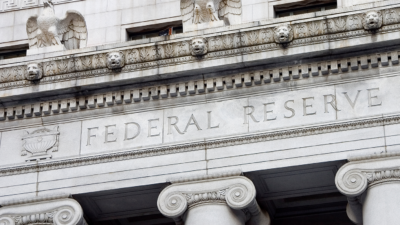James Carville, Bill Clinton’s campaign manager in 1992, identified three focus messages for the campaign, but it was the economic theme that proved the most memorable — and successful — for the Clinton campaign: “The economy, stupid.” (For trivia buffs, the other two were about change and health care).
But in the real estate sector — contrary to Carville’s guidance — economic growth is not the most important driver. Rather, it’s all about jobs. Across most property sectors, space absorption is more closely associated with job growth than with economic growth or any other single factor. Which only makes sense: Economic growth, as measured by GDP, can be fueled by any number of factors — like farming, mining and manufacturing — that do not necessarily require the need for more space in which to house the new economic activity.
But the connection between job growth and property demand is direct and clear. When firms add to their payrolls, they will generally need more space in which the new employees can work. Further, these new workers will spur the need for secondary space; more housing units in which they can live, retail space in which they can purchase their food and industrial space in which that food can be stored.
Of course, the link between job growth and space demand may not be immediate and varies over the course of the business cycle. After a recession, for example, many firms will have empty “shadow” space, as it’s generally easier to lay off workers in a downturn than it is to shed space. Thus, leasing typically lags hiring at the beginning of a recovery. But over time, there is a close link between job growth and property demand.
This point is worth remembering now as job growth slows, even as near-term prospects for economic growth look to be their strongest in years. The most widely-followed GDPNow forecast published by the Atlanta Fed expects second quarter GDP growth to be 3.8%, almost double the first quarter 2% growth rate.
Healthy but Slowing Job Growth
To be sure, the economy continues to create new jobs at a healthy rate — averaging just under 200,000 nonfarm payroll jobs per month over the past year, and about the same as in 2016.
That said, monthly job gains of 200,000 mean less now that the U.S. has 149 million jobs than it did when we had 130 million jobs nine years ago at the end of the last recession.
More importantly, the pace of job growth is easing, which is clear to see when employment changes are measured on a percentage basis, rather than by absolute job gains. [*] Jobs figures tend to be volatile, swinging up and down from month to month (as depicted by the gray bars in the below graph). But using averages to smooth out the monthly volatility, we can see that job gains peaked in early 2015 and fell steadily through the end of 2017, though increasing modestly in recent months (dotted line).

[1] For unknown reasons, the media and many economists focus on absolute changes in the number of jobs (not the percent gain) when discussing employment trends, but report percent gains (not absolute dollar gains) when discussing economic growth. This makes no sense. For consistency and common-sense, we should use percent increases for both.
Nearing Full Employment
What accounts for the slowdown? Simply, because the U.S. economy is now close to “full employment” — when everyone who wants to work has a job, i.e., there is no cyclical unemployment. Though not all economists accept the concept or agree on when it is achieved, there are several clear indications that we are indeed close to this point.
First, the unemployment rate, now at 4%, is about as low as it has been since the late 1960s, almost 50 years ago. And while the “labor force participation rate” (the share of working-age people in the labor force) has fallen appreciably since peaking in early 2000, it’s also true that the last time the unemployment rate was this low, the labor force participation rate was only 60.4%, compared to 62.9% today.

In any case, as shown in the above graph, the basic unemployment rate (solid blue line) is now well below its long-term average. The same is true of the so-called underemployment rate (solid red line), which also includes discouraged workers not actively seeking work and people working part time involuntarily. This measure surged to unprecedented levels during the Great Recession, but it too is well below its long-term average.
This means that most people now counted as out of work are voluntarily unemployed — leaving one job in search of a better one. Indeed, the job “quits” rate is now near its highest level on record.
The Search for More Workers
So why does full employment slow the rate of job growth? Because there are few workers available for the positions firms are trying to fill. This can be seen in the below graph on the left. For the first time since the government started tracking this data in 2000, the number of job openings exceeds the number of unemployed workers. This finding is consistent with the results of business surveys reporting growing labor shortages, particularly in those sectors that require specialized skills and those that tend to attract immigrants (e.g.construction, nursing, agriculture and food service).

As a result, a growing number of positions are going unfilled. In another first that began three years ago, job openings now regularly exceed hires, as shown in the below graph, and in the most recent reports, openings are more than 10% above hires — a significant reversal of the unusual pattern. In other words, job growth would be higher if there were more qualified workers available.

With the ranks of unemployed essentially depleted, firms looking to hire must rely on either greater population growth or attracting people not currently part of the labor force. The prospects for both factors appear unpromising. As shown in the next graph on the left, population growth has been falling steadily since reaching a recent peak around 1990. Blame both falling birth rates and reduced immigration, only partially offset by rising life expectancy rates (falling mortality rates).

Similarly, the labor force participation rate peaked in 2000 and fell steadily through late 2013. And despite slowly rising wage growth, which should induce more people into the labor force, the participation rate has been stuck in the same narrow range at around 63%. We may reasonably expect more people to enter the labor force if wage growth were to rise sufficiently, but firms seem to instead prefer investing in new plant and equipment to increase the productivity of workers. In any case, wage growth to date has not moved the dial.

Implications for the Property Sector
Across most property sectors, tenant demand for space is more closely associated with job growth than with economic growth. As noted previously, the link between job growth and space demand is clear and direct, though there may be lags.
With the economic growth heating up, property owners may be expecting this to translate into comparable rates of greater space absorption. But these expectations should be tempered. No doubt there will be some pick-up in leasing associated with the spike in GDP growth. But owners should focus more on job growth as better gauges for leasing prospects, and this outlook looks much more moderate, mainly because the ranks of unemployed workers available is largely exhausted. Accordingly, we do not anticipate significant growth in property leasing this year outside of the surging industrial sector, which is benefiting from the shift from in-store to online shopping.

 Colliers Insights Team
Colliers Insights Team
 Steig Seaward
Steig Seaward
 Aaron Jodka
Aaron Jodka